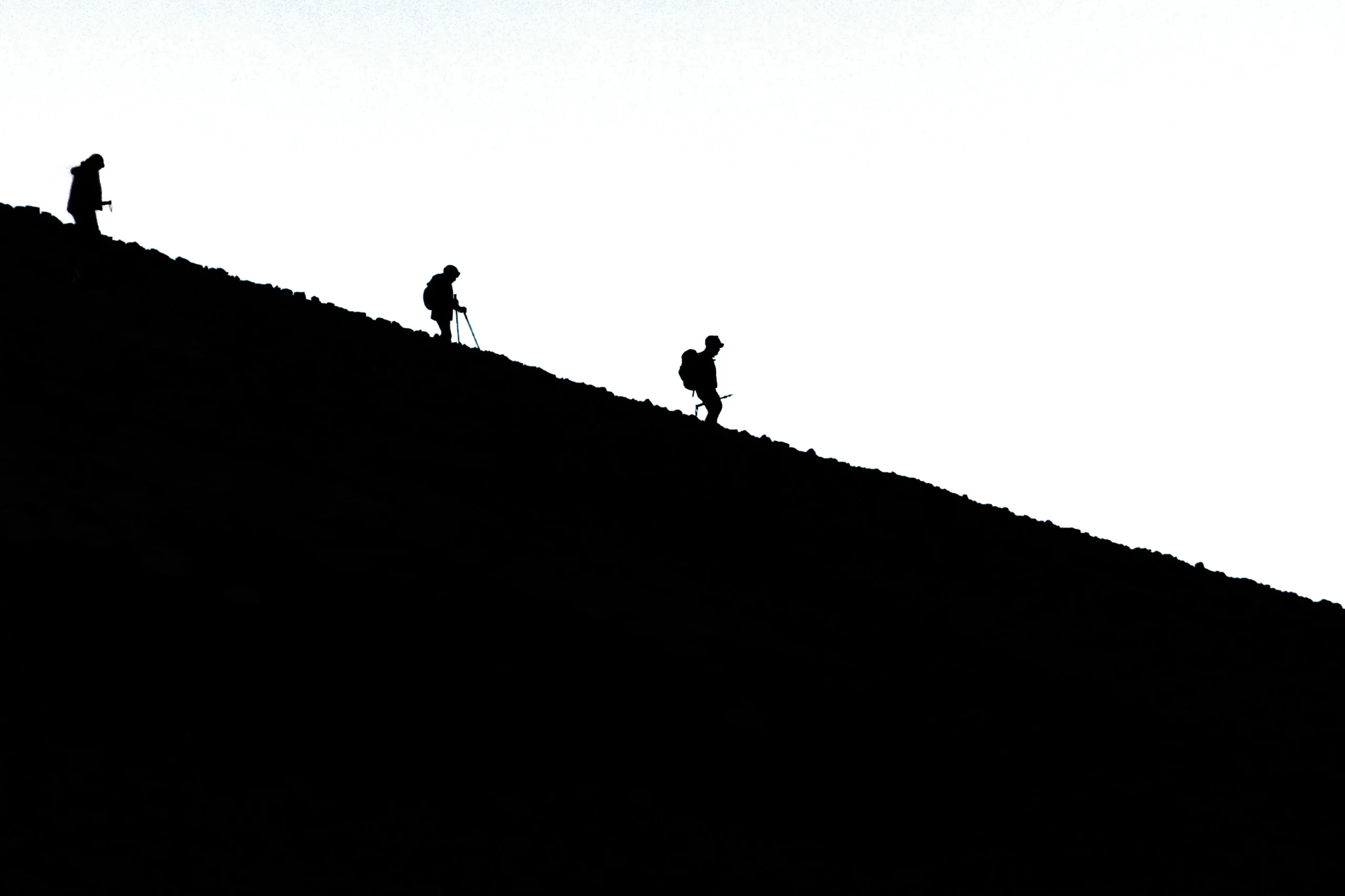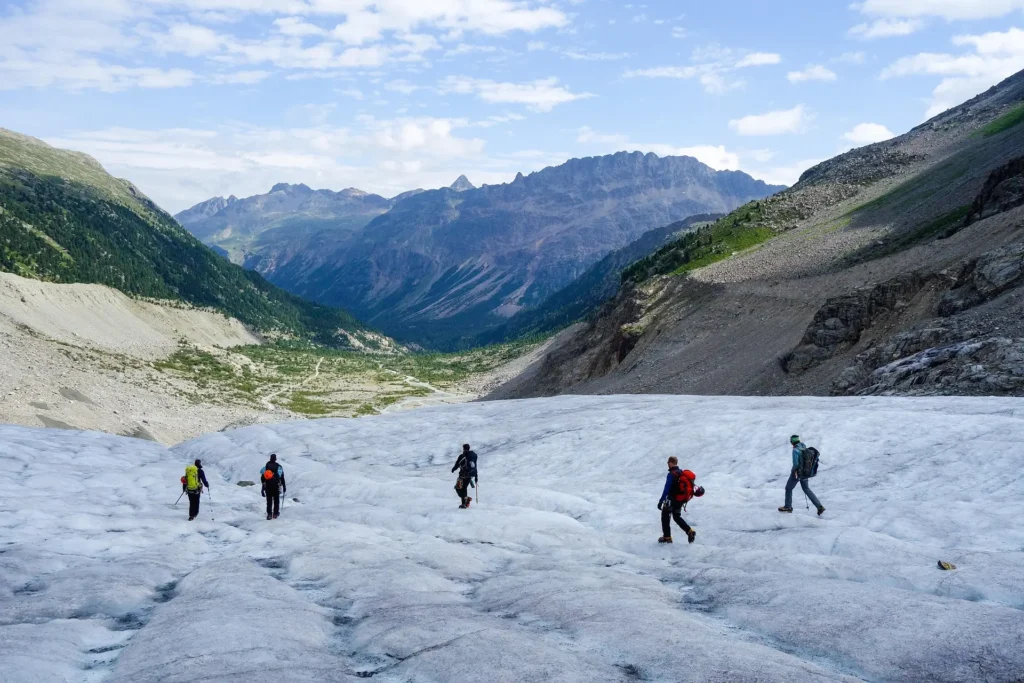Why Is Descending a Mountain More Dangerous?
When we think about the risks of climbing a mountain, most of us picture the grueling push to the summit – the icy slopes, the thin air, the unpredictable storms that can sweep in without warning. But here’s the harsh truth many climbers only come to realize in the most difficult way: reaching the summit is just half the journey. The most dangerous part often waits on the way down.
Seasoned mountaineers know this well. It’s not just a saying; it’s a hard lesson written in the history of mountaineering. Statistically, most accidents and fatalities don’t happen on the way up – they happen during the descent. It’s a fact that has caught even the strongest and most experienced climbers off guard.
Let’s dive into this silent, often overlooked threat – the part of the climb that truly tests your endurance, your focus, and your respect for the mountain.

Table of contents
The Descent: A Perfect Storm of Fatigue and Risk
The Science: How the Body Betrays You on the Way Down
Famous Tragedies That Happened on the Descent
Practical Tips: How to Descend Safely
Conclusion: The Real Summit Is Safe Return
The Descent: A Perfect Storm of Fatigue and Risk
There’s a unique emotional shift that happens when you reach the summit. The adrenaline, the thrill, the relief – it all floods in at once. For a moment, you feel invincible. But it’s exactly when climbers start to feel safe that their guard begins to drop.
Fatigue, which may have been hiding beneath sheer determination on the way up, now comes crashing in like a wave. Muscles tremble, energy stores are depleted, and every step down feels heavier. This is when mistakes happen. Reaction times slow. Concentration fades. The focus that carried you up begins to fray.
But the mountain hasn’t stopped testing you.
Suddenly, what seemed manageable on the way up – a steep snowfield, a tricky rock section, an exposed ridge – now becomes a bigger challenge in reverse. Descending is a different skill. Downclimbing demands more balance, more control, more patience. In fact, many climbers underestimate how much harder it is to move carefully downward, especially with tired legs and fading light.
And there’s another danger: time.
In high mountains, especially the Himalayas, weather windows slam shut quickly. A late descent can turn deadly with the arrival of storms, whiteouts, or the bone-deep cold of nightfall.
Legendary climber Ed Viesturs captured it best when he said:
“Getting to the summit is optional, getting down is mandatory.”
The mountain doesn’t forgive those who forget this.
The Science: How the Body Betrays You on the Way Down
Physiologically, the descent is when the body begins to betray the climber.
During the ascent, the drive to reach the summit often keeps you moving, but on the way down, the costs of the climb come due.
Dehydration, calorie deficits, and the impact of altitude start to drag you down. Cognitive function declines even more at altitude during the descent, just when you need clear thinking the most.
The real physical trap lies in the legs. Descending puts intense strain on the muscles through eccentric contractions, which not only fatigue faster but also increase the risk of slipping or falling. You’re not just walking – you’re controlling gravity. And gravity doesn’t get tired.
Famous Tragedies That Happened on the Descent
Mountaineering history is filled with tragic reminders of how dangerous the descent can be.
In the infamous 1996 Everest disaster, most climbers who perished had already summited. Fatigue, storm delays, and poor decisions during the descent became a deadly mix.
On Annapurna, widely known as one of the deadliest peaks, climbers often survive the summit push but are claimed by the descent, where avalanches, exhaustion, and collapsing snow bridges wait.
Even on mountains like the Matterhorn – familiar, popular, and seemingly less technical – the statistics are sobering. For every 1,000 people who attempt to summit, about three climbers die. And many of these tragedies strike during the descent, when the hardest part should already be behind them.
Numbers from the Austrian Alps paint an even clearer picture:
75% of mountain hiking accidents happen on the way down. Three out of four falls occur during descent. Many climbers, blinded by fatigue or overconfidence, misstep on loose ground or fail to notice a subtle hazard. In fact, a surprising number – almost 70% – had vision problems that contributed to their falls.
In the United States, decades of mountaineering data show that nearly 43% of reported mountain accidents end fatally. Again, many of these happen not on the climb, but during the way back home.
These aren’t just numbers. They’re the quiet warnings the mountains keep repeating.

Practical Tips: How to Descend Safely
The good news? Descending well is a skill you can train for.
Safe descents come from preparation, patience, and respecting the mountain all the way through the final step.
- Set strict turnaround times. The summit means nothing if you don’t leave enough time and energy to descend safely.
- Keep eating and drinking. Many climbers stop fueling after summiting, but you need energy even more on the way down.
- Stay sharp. The descent demands full attention. Even one careless step can lead to disaster.
- Train specifically for descents. Focus on building eccentric strength, balance, and controlled footwork.
- Plan for changing weather. Never assume conditions will hold just because they were good on the way up.
As mountain guide Anatoli Boukreev once said,
“Mountains aren’t stadiums where I satisfy my ambition to achieve; they are the cathedrals where I practice my religion.”
Respecting the descent is part of that discipline.
Conclusion: The Real Summit Is Safe Return
In mountaineering, success isn’t measured by standing on the top – it’s measured by making it back home. The descent, though often overshadowed by the drama of the summit push, is where the mountain truly tests your judgment, endurance, and humility.
The lesson is clear: the summit is only the halfway mark. The real success is returning safely.
The descent is where you face the mountain’s final question: Did you save enough strength, enough focus, enough humility to make it back?
